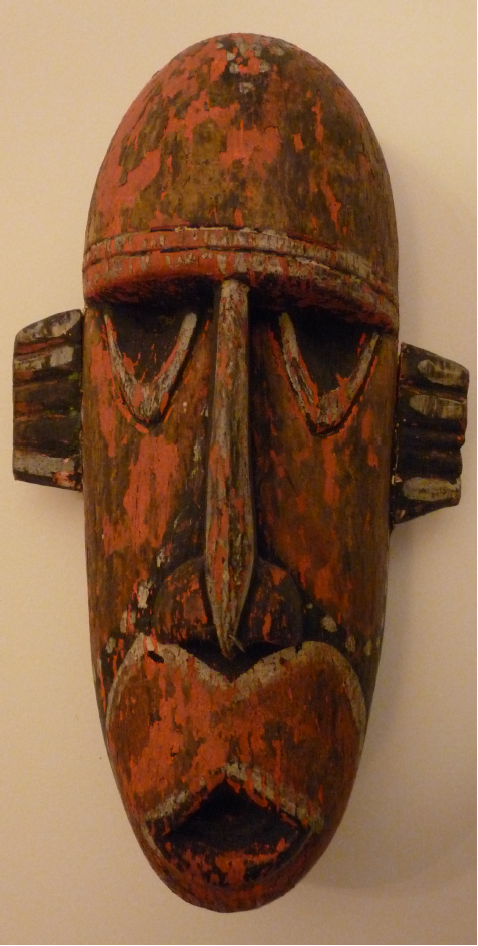Mask in the style of an Abelam Yam Mask
This is another mask very probably created as an art object in the style of a long-established ceremonial mask. Yam masks are not, despite the color of this piece, meant to make the wearer resemble a yam. Rather, they are small carved or woven masks intended to be worn by actual yams. Because this mask is extremely heavy for its size, lacks the perforations necessary to accommodate the upper decorations that usually contribute to making a complete yam headdress, and has uncharacteristic ears, it is unlikely that it was created to be "worn."
One of the major foci of ceremonial life among the Abelam people of northeast Papua New Guinea is the competitive cultivation and exchange of enormous yams. The Abelam grow two distinct kinds of yams—a small variety used as ordinary food and long yams, massive tubers that can be upwards of twelve feet long and weigh as much as 150 punds. A man’s social status is determined largely by his success in growing long yams.
In a custom that forms the basis of anthropological understandings of exchange, each Abelam man has a permanent yam trading partner to whom he ceremonially presents his largest yams following the annual harvest, later receiving those of his rival in return. Men who are consistently able to give their partners longer yams than they receive gain great prestige.
Lavishly adorned for the presentation ceremony, the finest long yams are essentially transformed into human images, decorated in the manner of men in full ceremonial regalia. The “heads” of the enormous tubers are adorned with specially made yam masks resembling this one, which are made exclusively for yams and are never worn by humans (hence the absence of eye or mouth holes). Though many yam masks are woven, it is not uncommon among the Abelam to find carved wooden masks with the orange coloration, straight brow and spotted decorations of this example.
Image: Ironwood, pigment, metal hardware; 23.5 x 12 x 9.5cm.
Nelson South East Asia Collection © 2025
